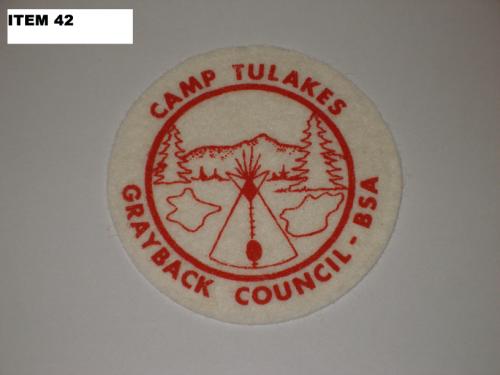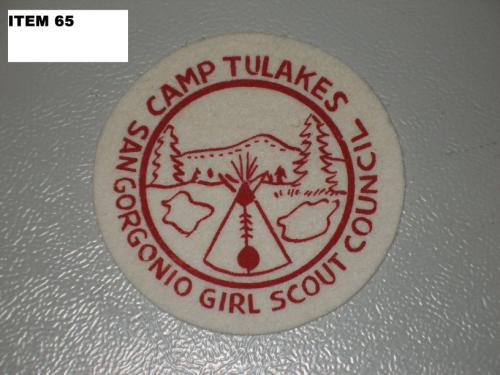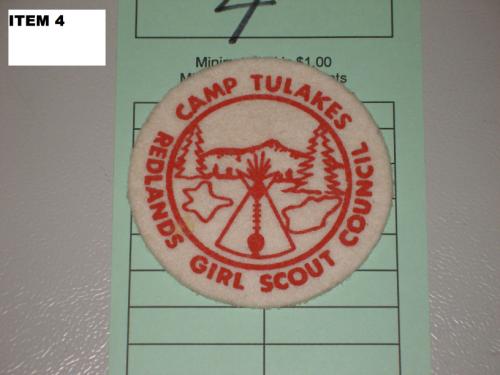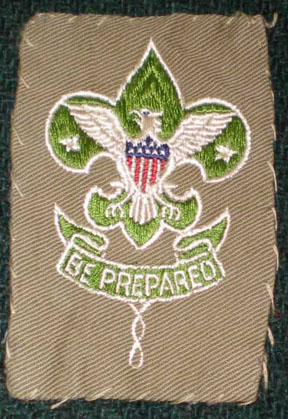A red and white air base strip surfaced that I was not familiar with from Morocco. It was the youth military base strip for the person selling it so I asked him if he could share his remembrances from Scouting in Transatlantic Council in the 1950s.
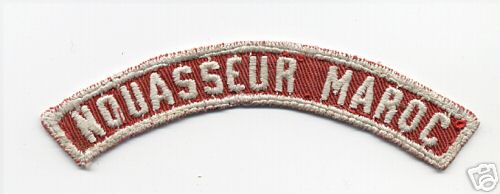
Here’s what he had to say:
Roy,
My dad served in the US Navy in WWII, but he went to Morocco in 1951 as a civilian working for the contractors building the air bases. In 1953 when the bases were completed, he went to work for the Air Force as a DOD civilian.
My first experience in scouting was as a French cub scout. We lived in Marrakech at the time, and did not have access to the American scout program at the air base which was about twenty miles away.
I was a French cub scout from 1952 to 1953. In joined the Boy Scouts of America in 1956 when we moved on-base (Nouasseur AFB). Prior to that we lived on the local economy as we were not entitled to on-base housing as civilians. That changed in 1956 due to increasing violence between the French and Moroccans (sounds familiar, doesn’t it). Shortly thereafter, France, which had governed Morocco as a protectorate since 1912, granted it independance.
Then we moved to another air base where we had on-base housing. I was a member of Troop 182, Nouasseur AFB, Morocco, from 1956 to 1959. I think there were five US Boy Scout troops in Morocco, at four Air Force Bases and a Navy Base. We had a summer camporee each year at Sidi Slimane AFB, which had a large wooded area, unlike the other bases, which were pretty arid and devoid of vegetation. Scouts from the various troops selected for OA membership were tapped out at the annual camporee at Sidi Slimane AFB and completed their ordeal that night and the following day. Once tapped out, we were allowed to get one raw egg and two matches, and we were then taken into the woods to spend the night alone. The next day we had service projects to complete, but were not allowed to talk. Probably not much different than now…? (Editor’s note – it is still very similar.)
The air bases that I can remember were Ben Geurir AFB, near Marrackech; Nouasseur AFB near Casablanca; Sidi Slimane AFB at Sidi Slimane; and an USAF installation at Rabat, the capital. There was also a US Navy base at Port Lyautey. I don’t know if there were troop rockers for the other bases that preceded the TAC red&white CSP for Morocco.
In 1959, our family moved to Ludwigsburg, Germany, where I joined Troop 63. I earned my Eagle rank there, and I have a Eagle certificate signed by President Dwight D. Eisenhower. In Germany, we did a lot of joint activities with the German Boy Scouts, especially camping. The German scouts were really into Indian lore. They camped in large teepees which could accommodate a patrol size group, and did their cooking in homemade cookware over a fire in the center of the teepee. We traded patches, knives, and belt buckles with each other.
I worked the summer of 1960 on the staff at Camp Freedom in Dautphe, Germany. Camp Freedom was operated by the Transatlantic Council, and scouts from all over Europe, Africa, and the Middle East attended camp there for two weeks. Part of our staff duties were to conduct the OA Brotherhood ceremonies for Ordeal members from all the troops in attendance each two week segment. We had a lot of fun doing these ceremonies, and a lot of the German neighbors would attend. Many Germans were big fans of anything to do with Indians. We had Indians costumes for the ceremonies, and Camp Freedom was a great place for Order of the Arrow activities. I have some old photographs if you are interested. I graduated from Stuttgart American HS in 1961 and returned to the States for college, and was inactive in scouting for several years.
I worked as an assistant scoutmaster, scoutmaster, and troop committee member in Virginia during the 70’s and early 80’s, but I haven’t been active since then, other than contributing to the local council through the United Fund. One nice memory was receiving a letter in the late 70’s from one of the boys in a troop where I had been an assistant scoutmaster a couple years earlier, thanking me for inspiring him to earn his Eagle rank. He is a career Secret Service agent now.
Scouting was one of the few activities we had available, especially in Morocco, and it was a major part of my life then. I most remember sleeping under the desert skies. With virtually no light pollution and seldom a cloud, the night skies seem to be the most brilliant I remember seeing anywhere. Before star-gazing, we always had a rousing game of night-time capture the flag.
Ed Morris
